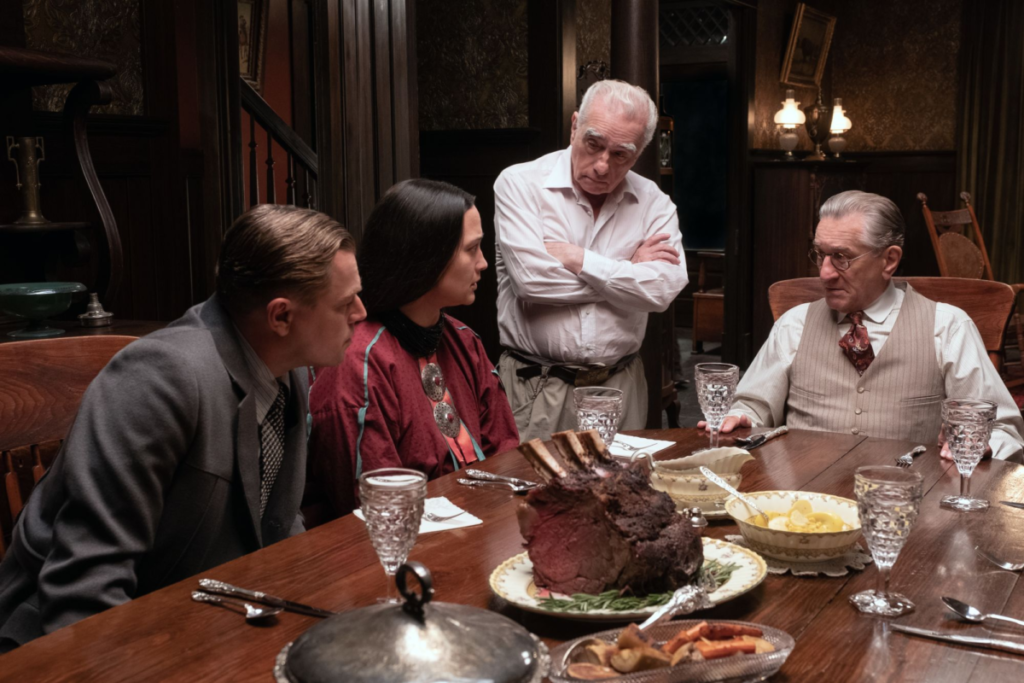Last Friday, I traveled fifteen minutes to see Killers of the Flower Moon (Scorsese, 2023) on the big screen. The film is classic Scorsese. It clocks in at 3 hours and 26 minutes with elaborate storylines, violence, and tracking shots.

Some audiences are disinterested in KotFM’s because of its lengthy runtime. Personally, the runtime is one of the reasons I believe the film feels so complete from start to finish. Scorsese’s film builds a world in Osage County Oklahoma in the 1920s, a world wholly unfamiliar to most audiences, while simultaneously juggling numerous characters’ storylines, motives, and deaths. To the point of audience unfamiliarity, Killers of the Flower Moon is a rare Hollywood film that focuses on Native American culture rather than villainizing them. Not every Native American tribe is the same, however. The tribe in Dance With Wolves (Kevin Costner, 1990) is Sioux while KotFM showcases the Osage tribe. It takes time for Scorsese to structure a film around an Osage community with customs that audiences understand. For example, Lizzie Q (Mollie’s mother) hallucinates an owl flying towards her. It takes runtime to explain to the audience that this owl signifies a bad omen in Osage culture.

Scorsese illustrates Osage County’s power dynamics from the very beginning of the film with his clever use of blocking. He shows Osage natives wearing elegant clothing with White Americans shining shoes and hopping on pickup trucks for work in the background; In Osage County, Natives are at the top of the socioeconomic pyramid. Osage Natives became wealthy through oil deposits on their land. Ernest Burkhardt (Leo DiCaprio), a middle-class white man with a wealthy uncle, marries Mollie Kyle, an affluent Osage woman with oil money. What follows is a deterioration of Osage culture through a series of murders. The Burkhardt family are parasitic. They murder members of Mollie’s family and tribe frequently and, with each murder, a piece of the Osage identity disappears. For example, at the beginning of KotFM, funerals are traditional Osage ceremonies. But after dozens of deaths, funerals become conventionally American, losing their Osage values. My takeaway from Killers of the Flower Moon is that culture and tradition can be eroded by human greed and desire for power. Throughout American History, conflict between White Americans and Native Americans shows this. Killers of the Flower Moon is just one tiny piece of the puzzle.